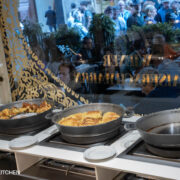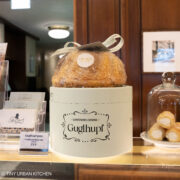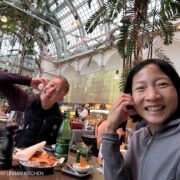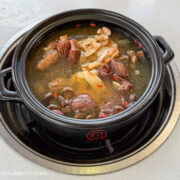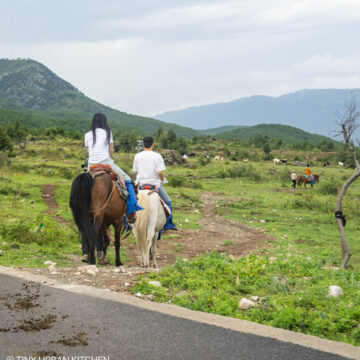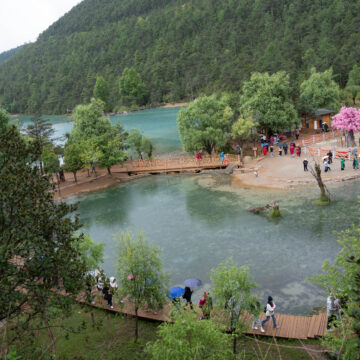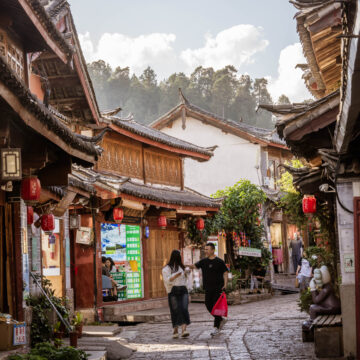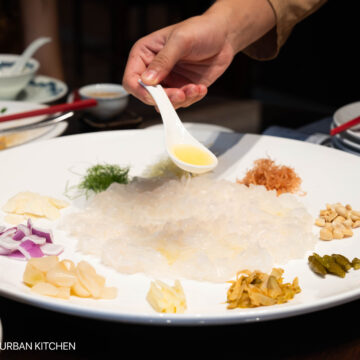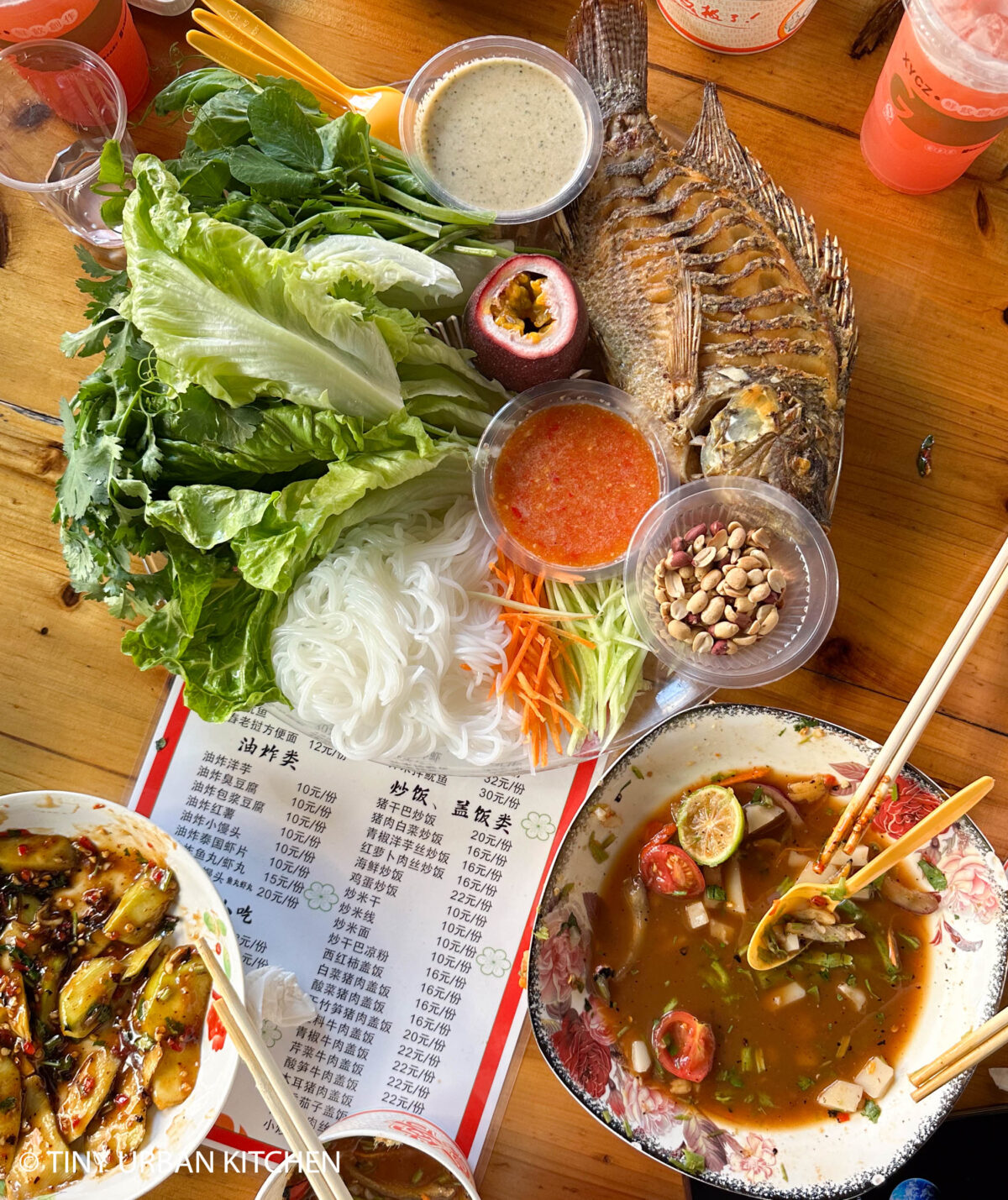
This post is part of a larger series detailing my trips to China earlier this year in 2023. Other posts in this series include Guilin & Yangshuo, Guilin & Yangshuo (Food + Lodging), Hangzhou, Yunnan (Poisonous Mushroom Hot Pot), and Foreigners Navigating Post-Pandemic Travel in China.
Xishuangbanna is one of the most ethnically diverse regions in China, having more than 25 different ethnic minority groups. The Dai is one of the largest, and thus their food is quite prevalent and well-known, both in the region and also throughout China.
In essence, Dai cuisine is characterized by four basic flavors: sour, sweet, bitter, and spicy. This is reminiscent of Thai, but bitter replaces sweet, and they don't really use coconut milk or fish sauce. The cuisine is fresh and vibrant, characterized by some combination of (1) fresh herbs (such as cilantro, culantro, mint, garlic, and ginger) + (2) fiery chilis and (3) something acidic (usually lime but sometimes vinegar).
You can read more detail about the Dai minority group and their food in my previous post (which goes into a lot more detail!).
We traveled to Xishuangbanna over Chinese New Year (!!) [you can read all about that craziness here]. Yes, China was CRAZY crowded. And since we'd been to Xishuangbanna before, we decided we wanted to have more of an "off-the-beaten-path" type vacation this time.
A friend of a friend (who worked as a tour guide before the pandemic) was happy to be our tour guide just as things were opening back up in China.
A Very Local Dai Lunch
We asked our tour guide to take us to a very local restaurant. We wanted to eat like the locals. He was a local (from the Hani minority group). He knew we were desperately trying to avoid crowds and tourist jam-packed places.
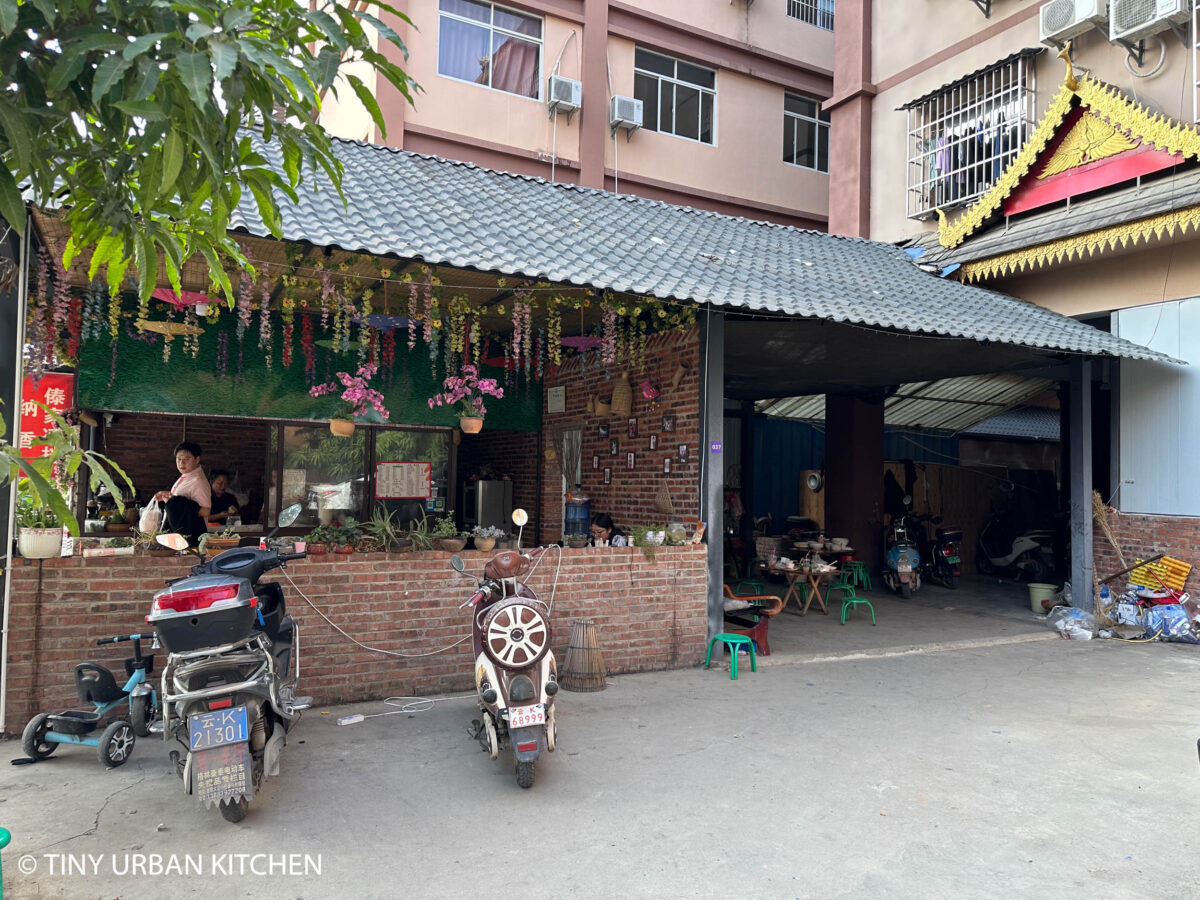
So, he drove us to a small Dai urban village to enjoy a very traditional and local lunch.
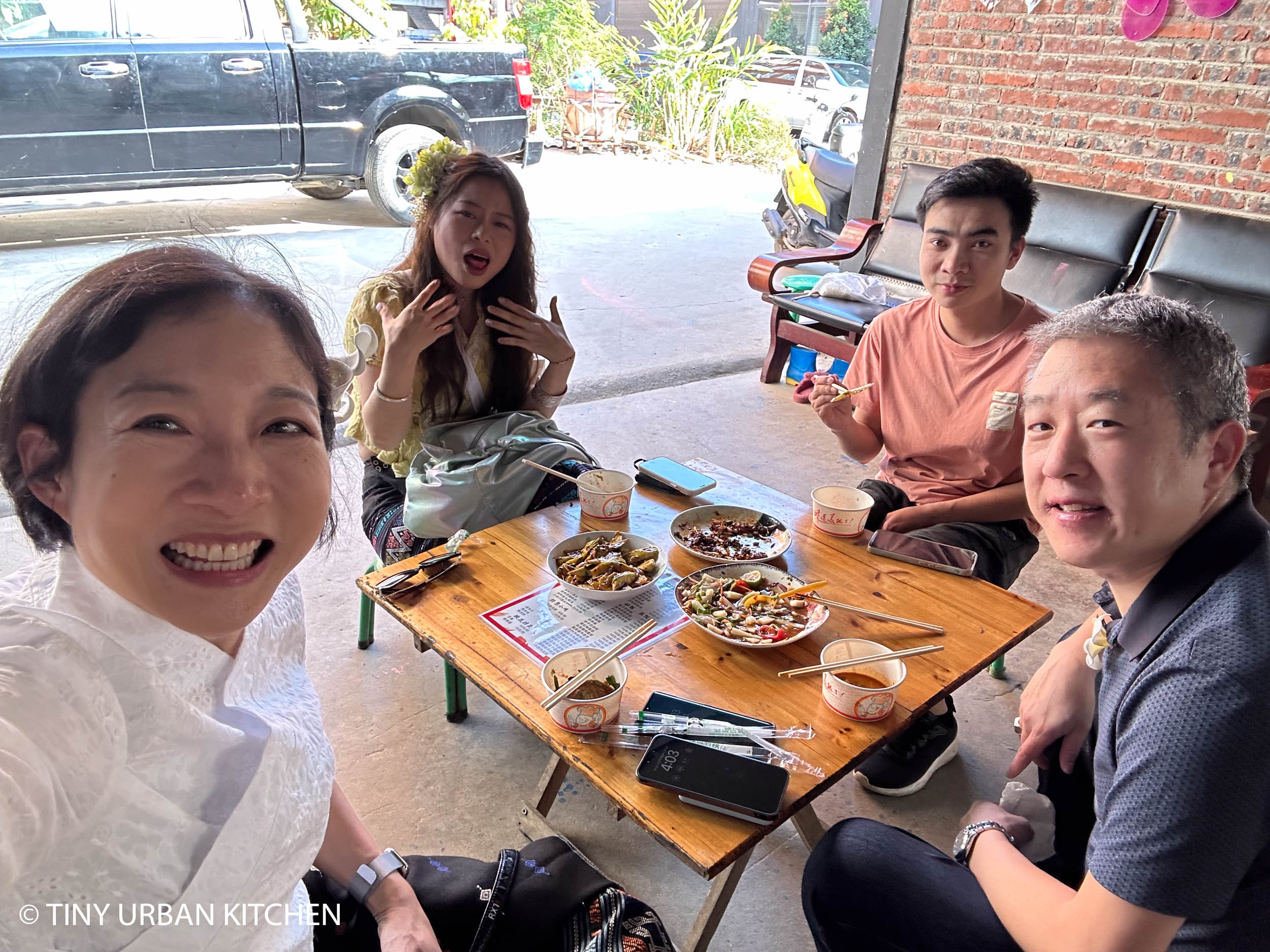
Consistent with traditional Dai style, we sat on little low stools and ate at a low table. We were sitting outside, in what almost felt like a garage.
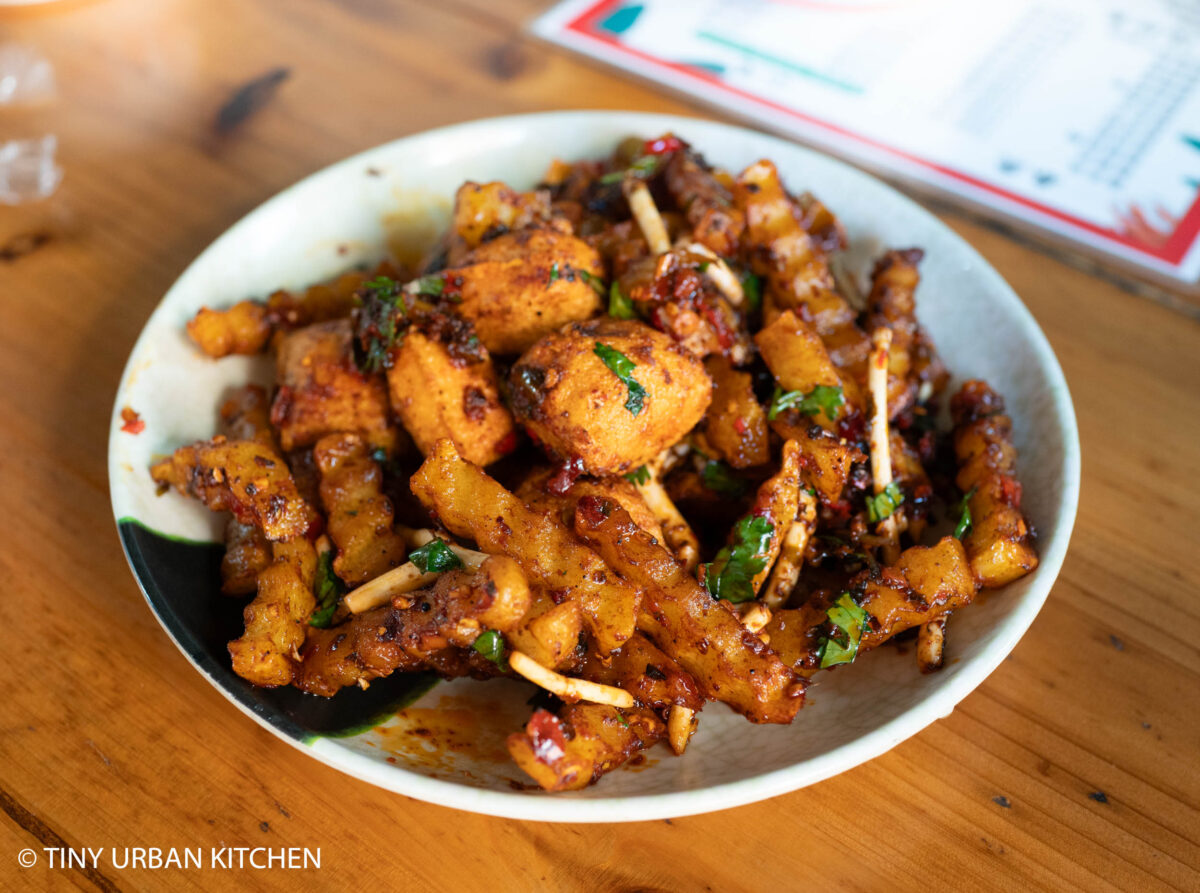
These looks a bit like fries but they are more like deep fried fresh cut potatoes. The spicy sauce was addictive, and the fresh potatoes really make the texture more crisp. It was delicious.
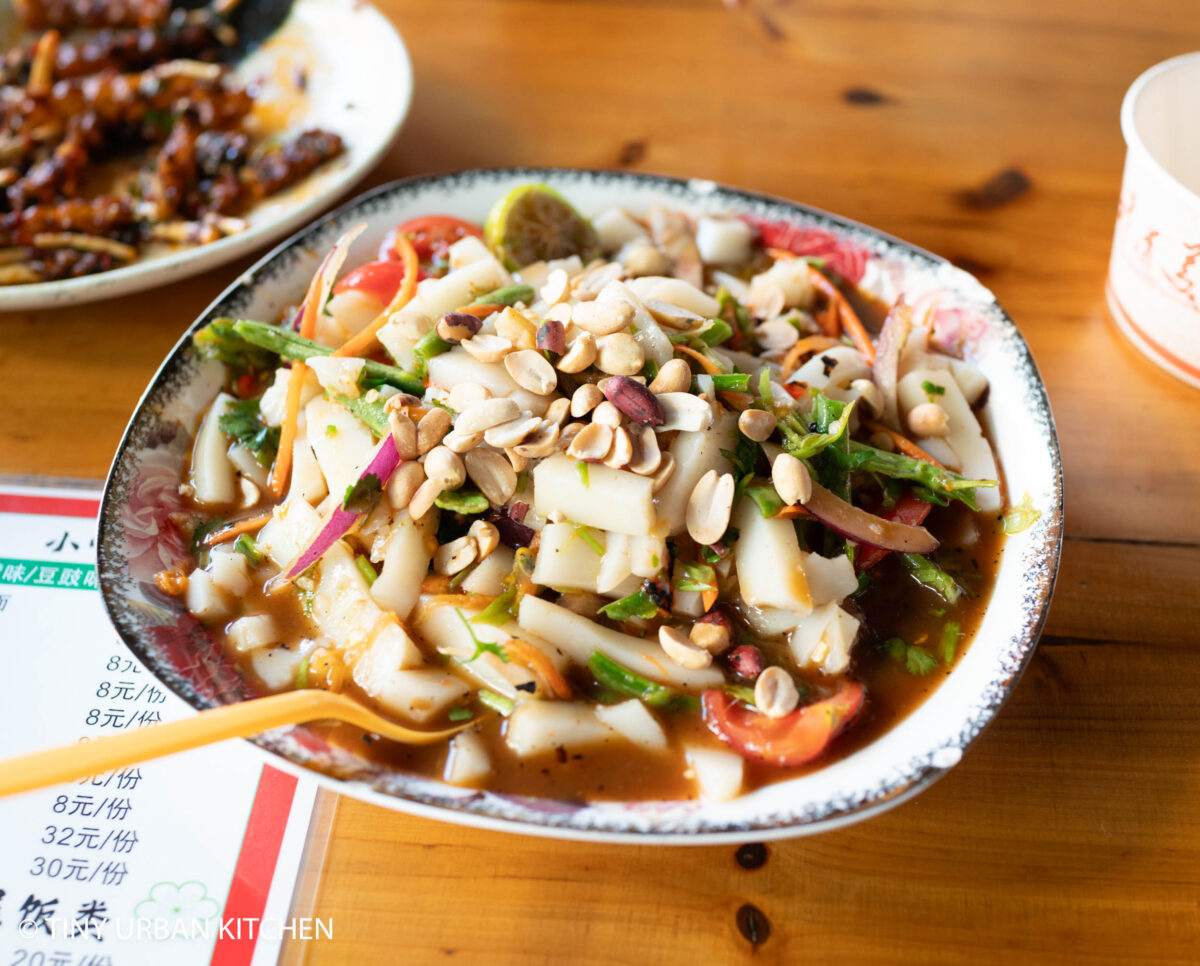
I love this cold refreshing dish of liangfen (bean starch "noodles") tossed in a dressing of lime juice, fish sauce, chili, and many other flavors. The fresh vegetables, peanuts, and everything else really added all different types of flavors and texture.
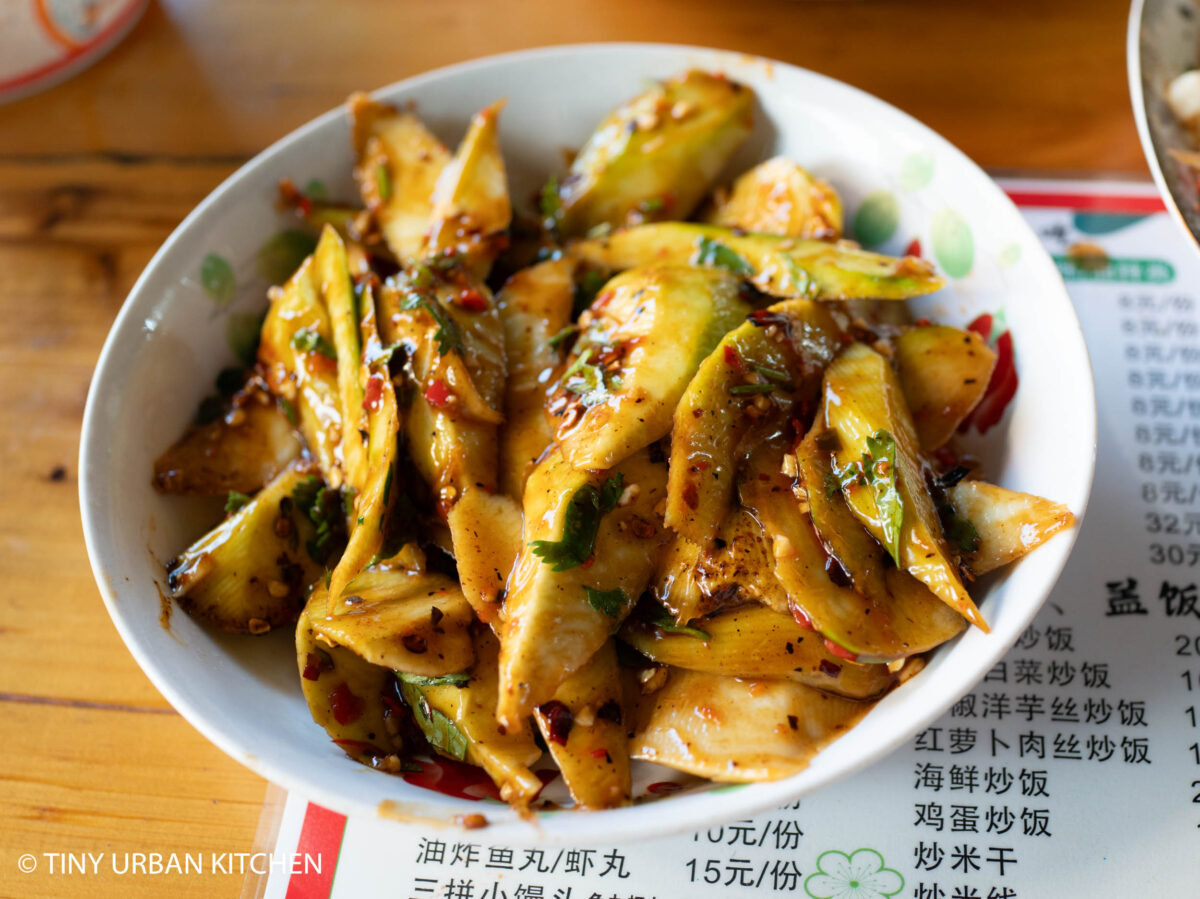
This sour mango salad is made from unripen mangos. It was VEEERRRRY spicy, so I couldn't really handle it!
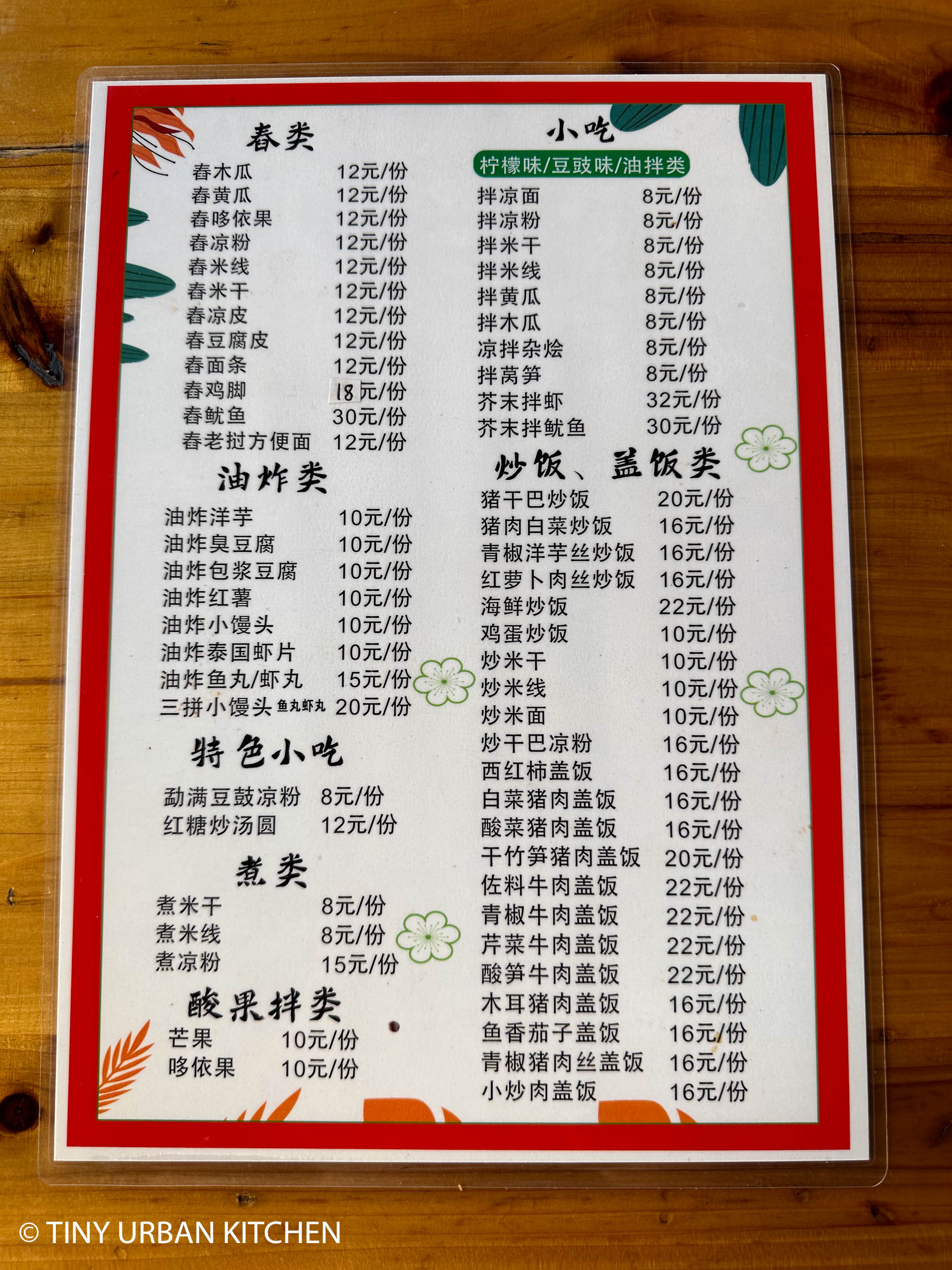
I was floored by the prices. Keep in mind that US$1 is about 7RMB. Most of the appetizers above were between 8-10 RMB, so like $1 - $1.50 USD. Crazy. And they were so fresh and so tasty.
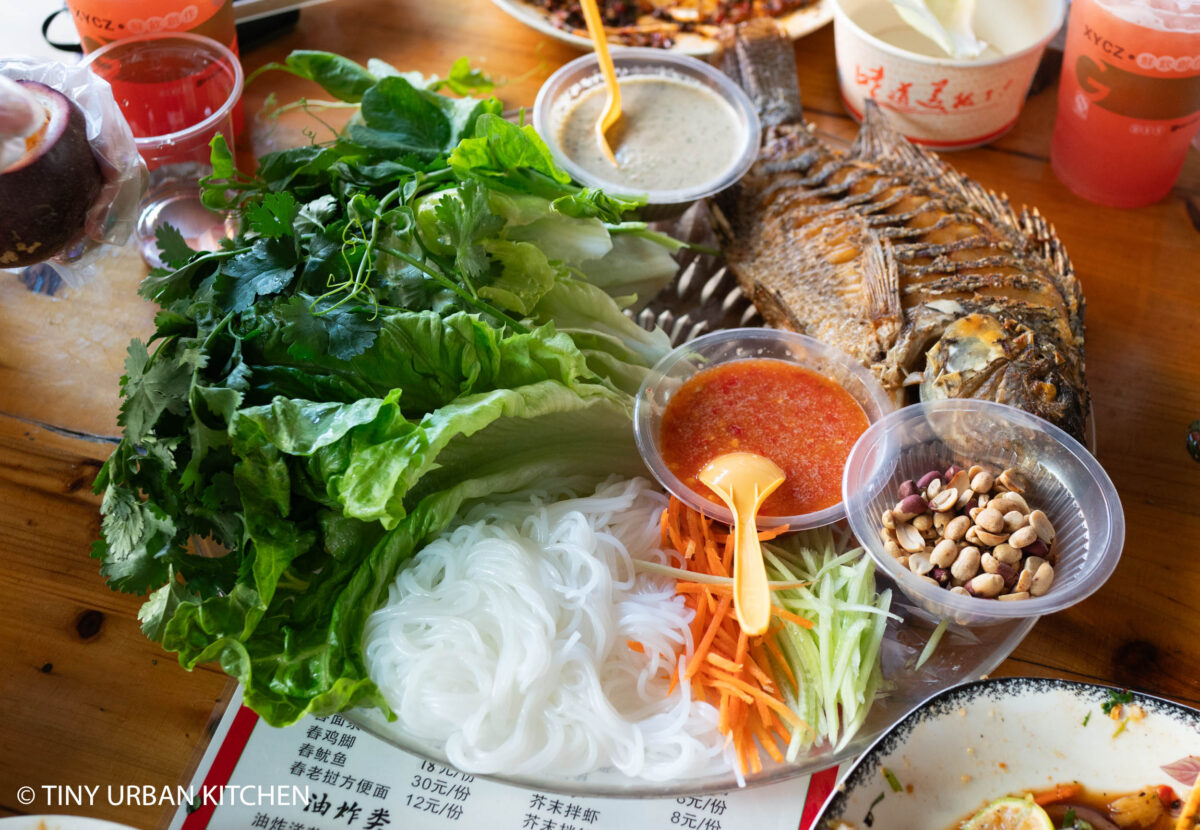
The centerpiece was the make-your-own fried fish lettuce wraps. Everything was so fresh, the sauce was so flavorful, and the dish was oh-so-good.
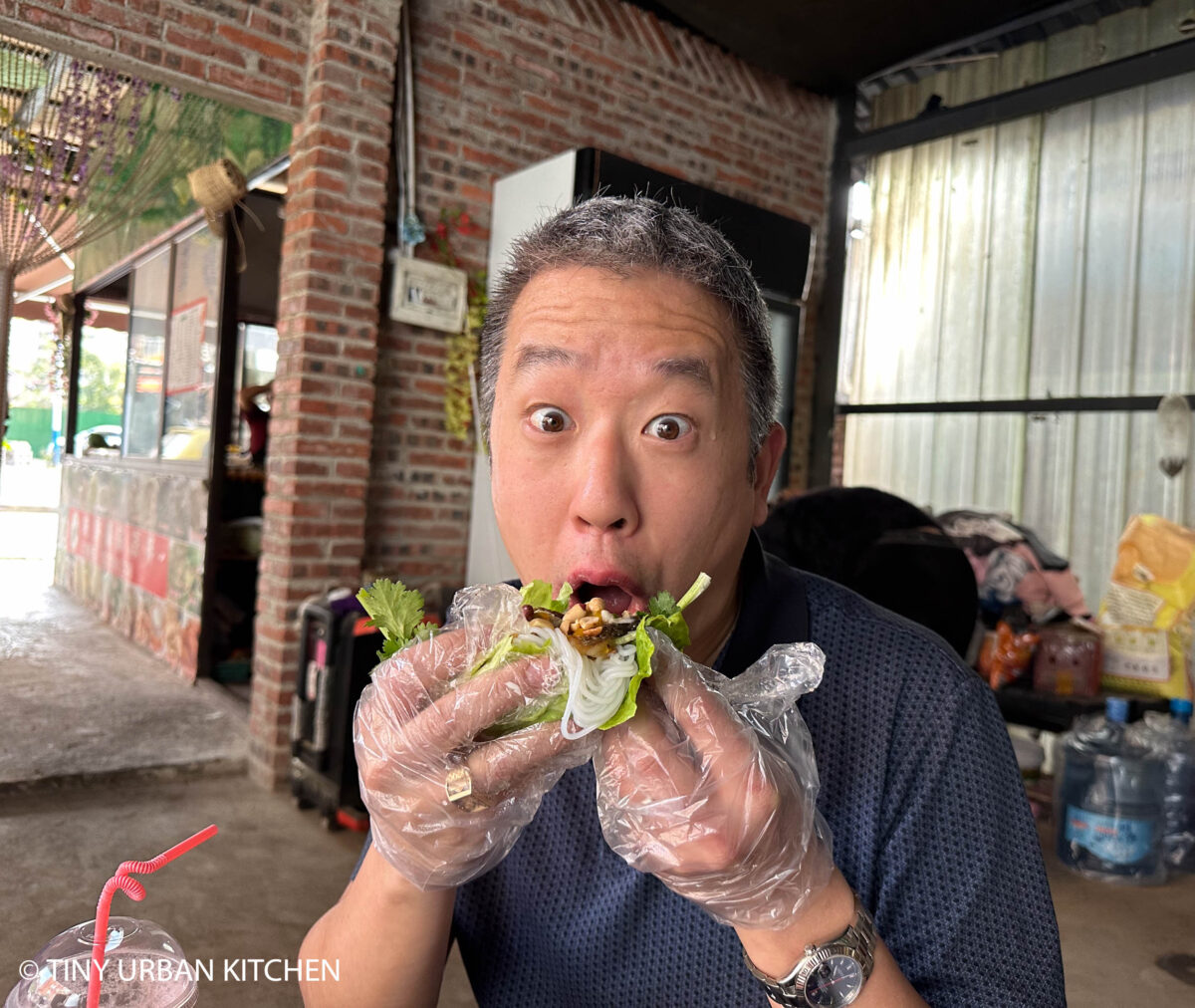
Hee hee, they even gave us gloves to use, which was great for Bryan, who hates getting his hands dirty.
Visiting an Ancient Dai Village
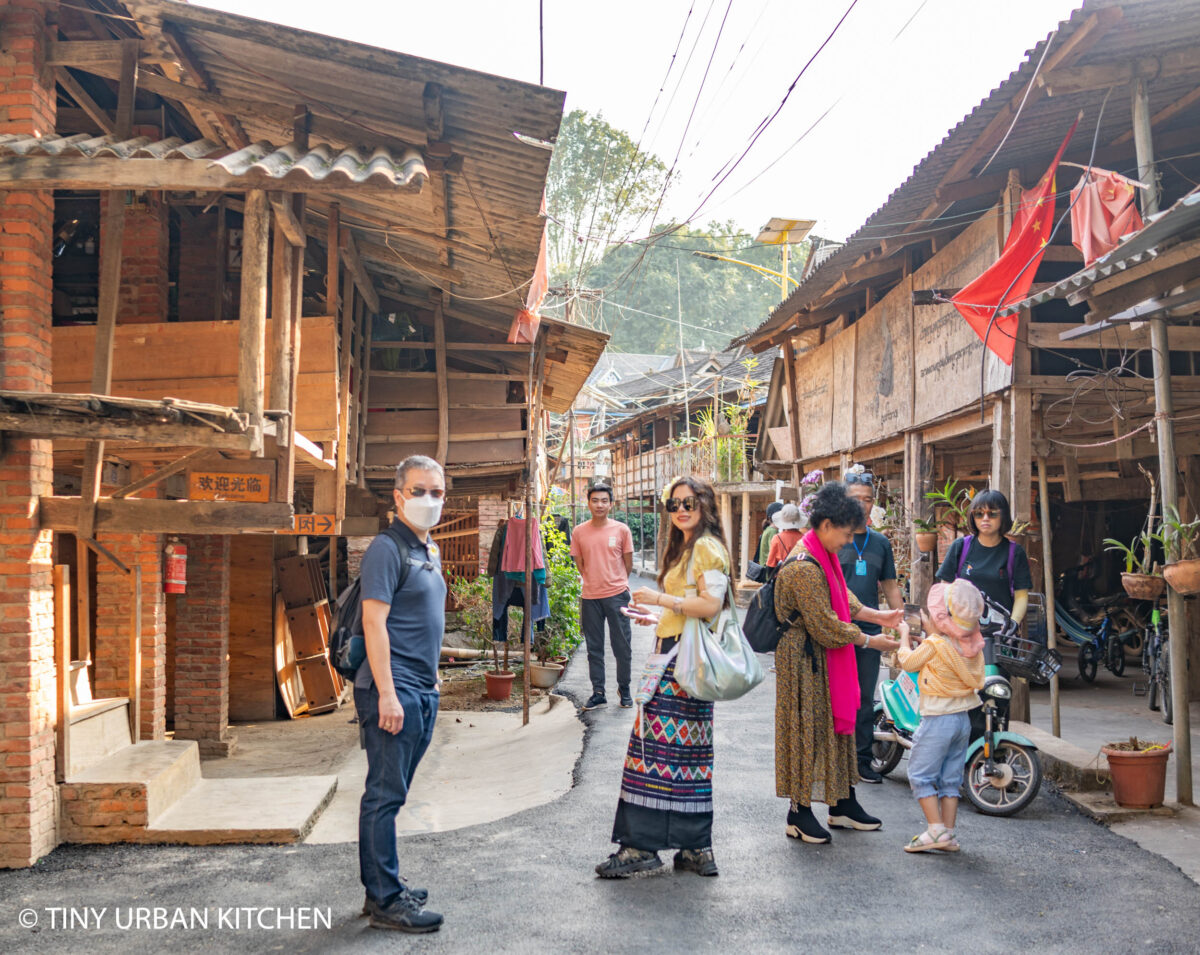
There are many traditional villages in Xishuangbanna, and each one has its own culture and personality. We visited one called Mann He Na Natural Village 曼贺纳自然村寨. It was a Dai Minority Cultural Park.
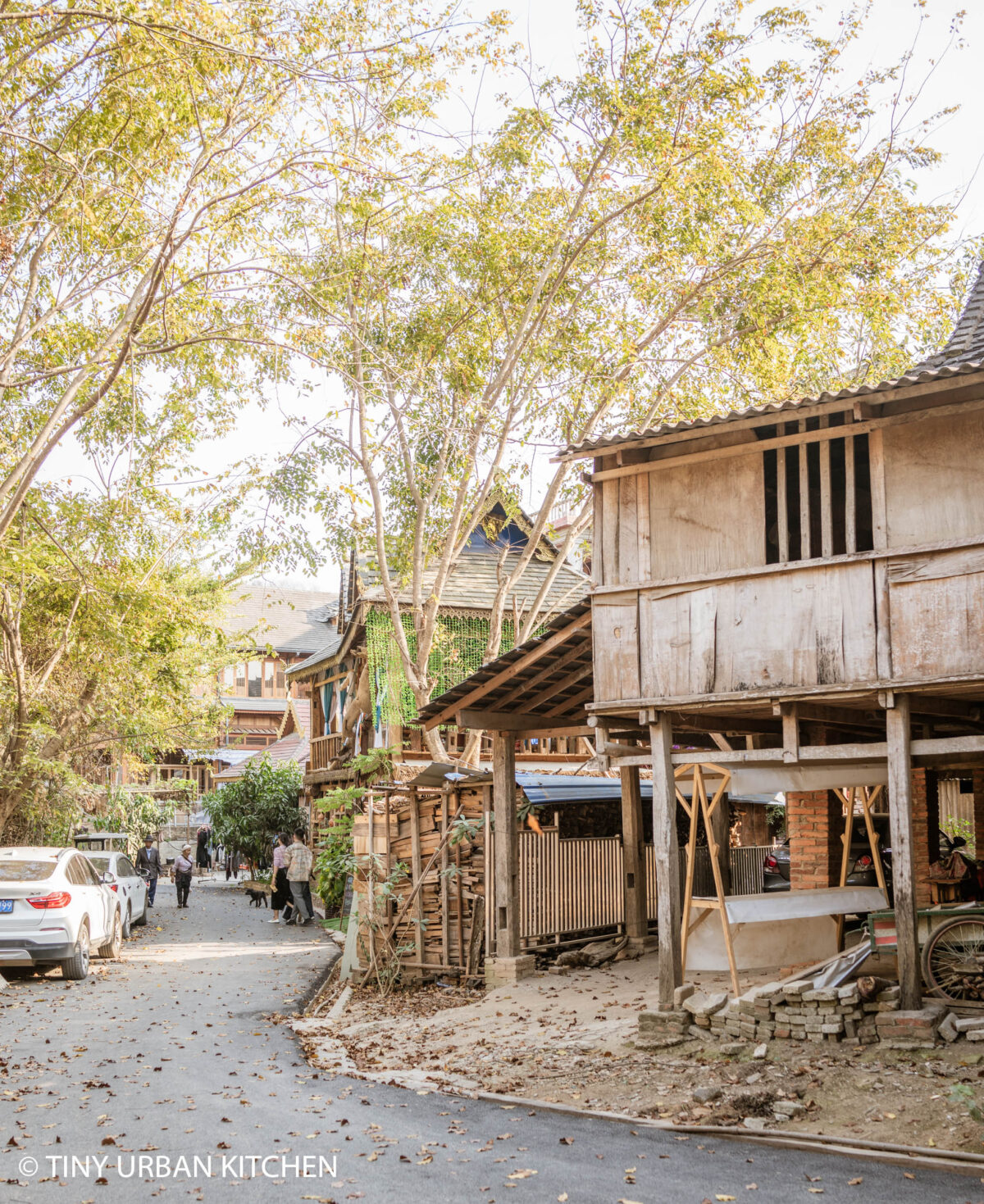
Dai houses are made of bamboo and are unique in that no one lives on the ground floor. It is usually kept open, so the houses look like they are on stilts. Once used to keep livestock and food, in modern times this area becomes space to park cars or mopeds.
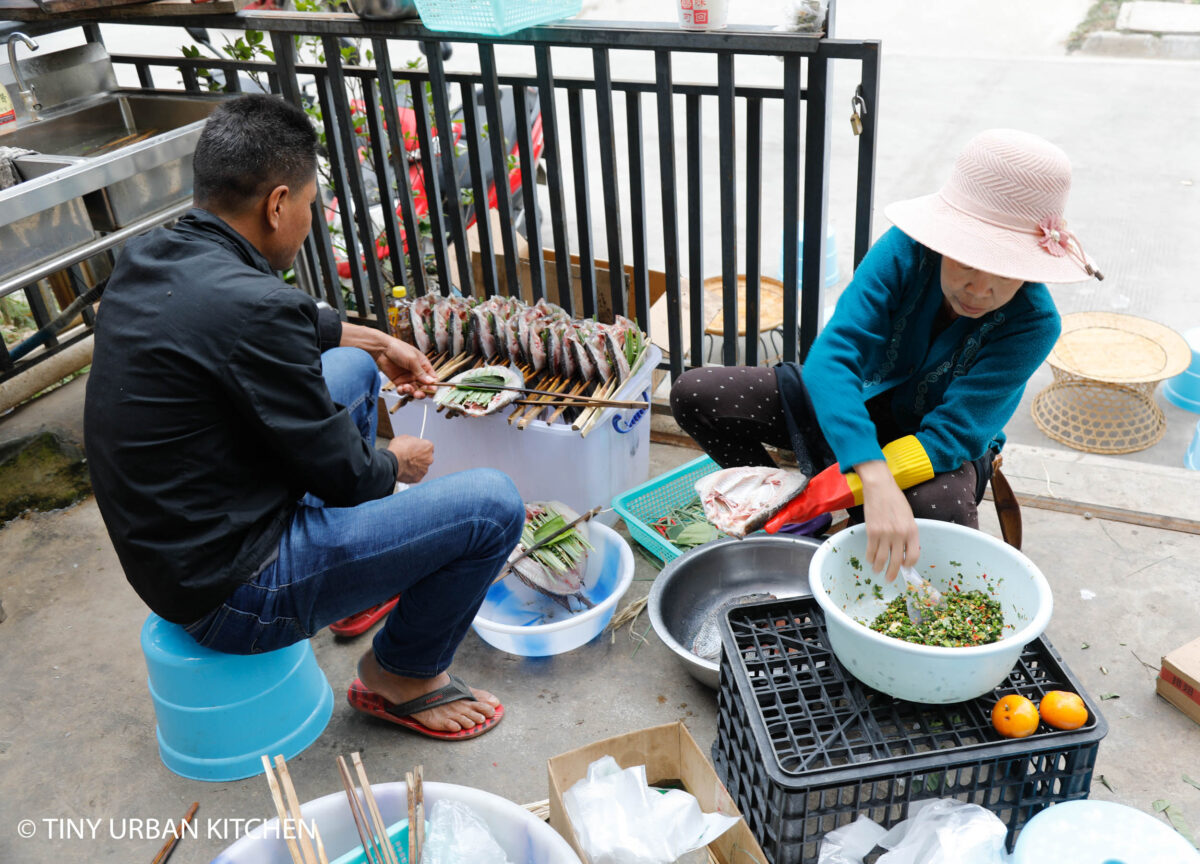
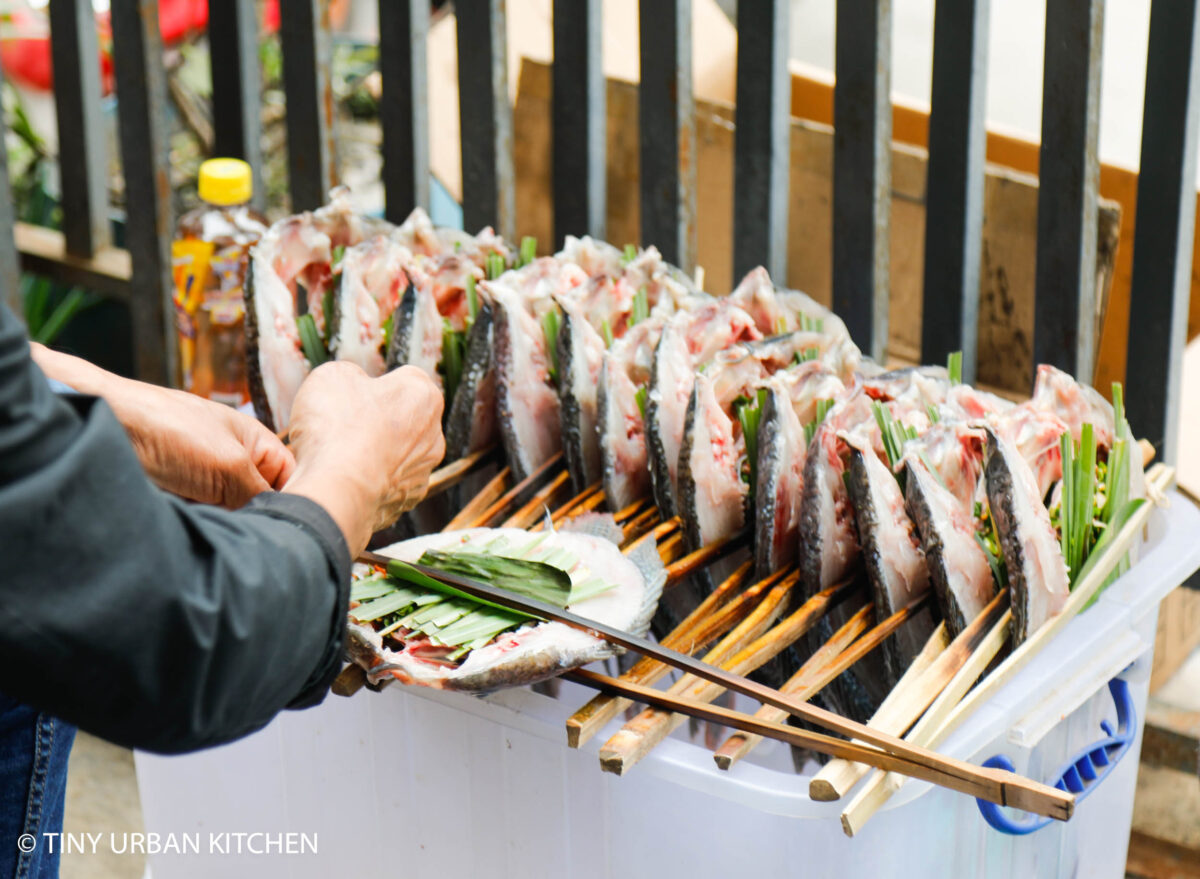
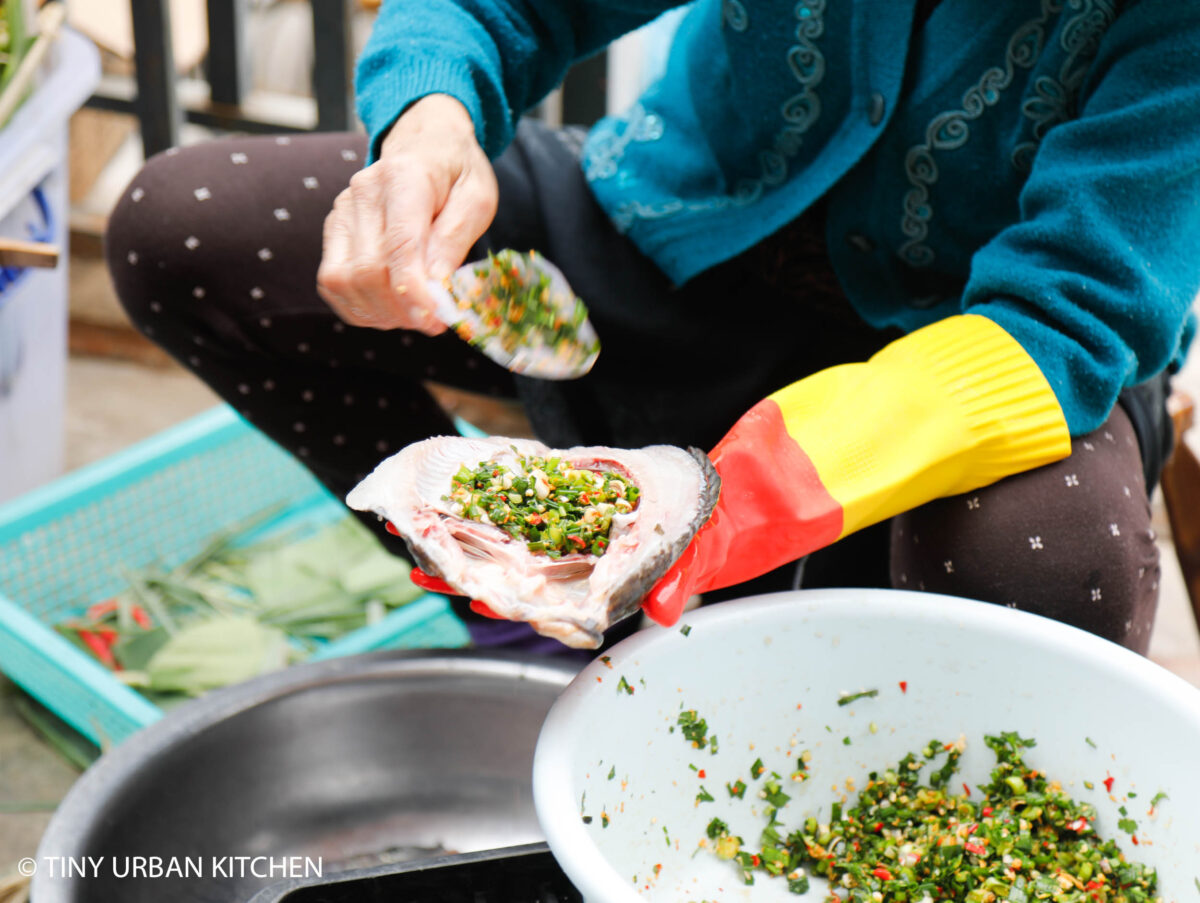
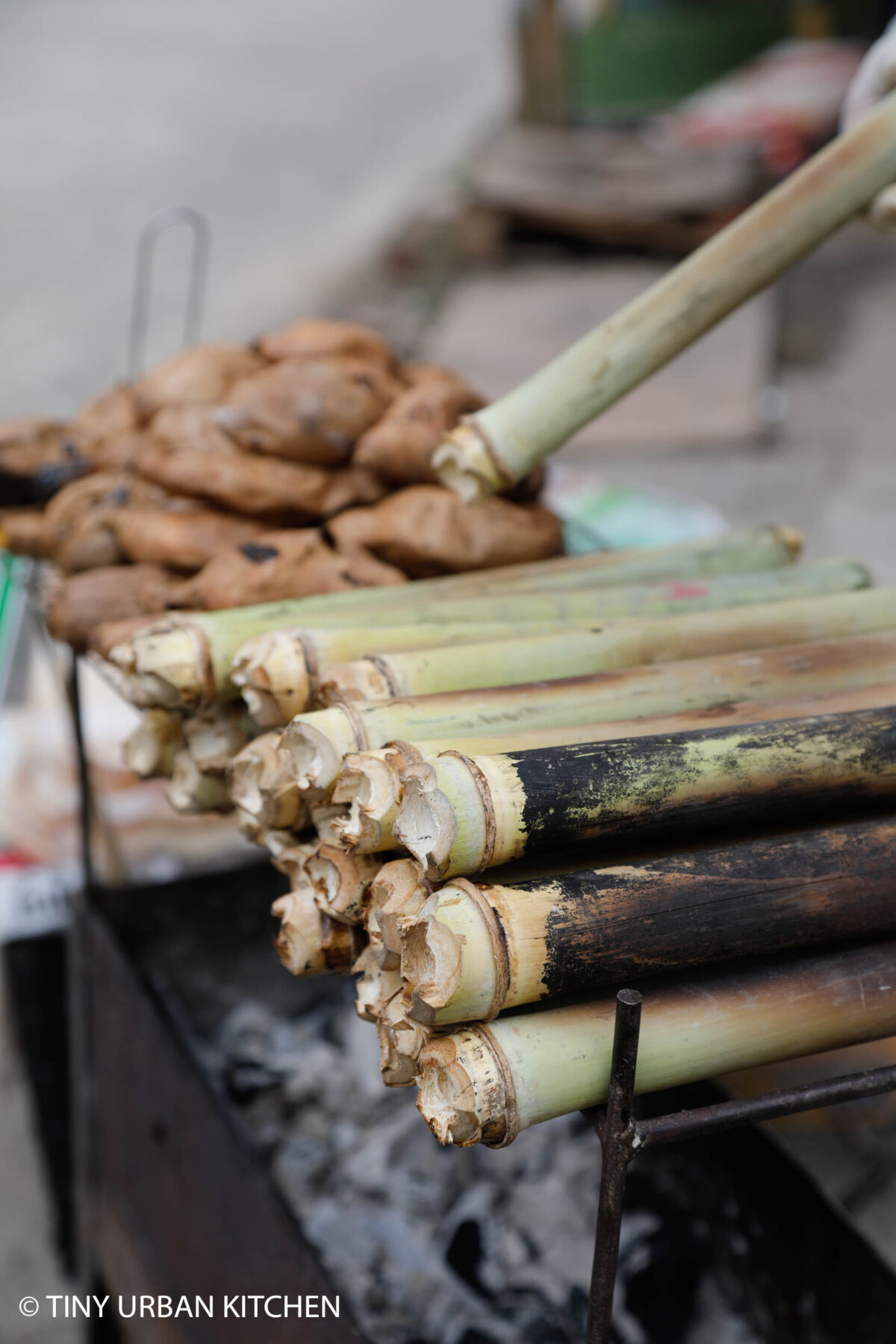
Dai BBQ at a Night Market
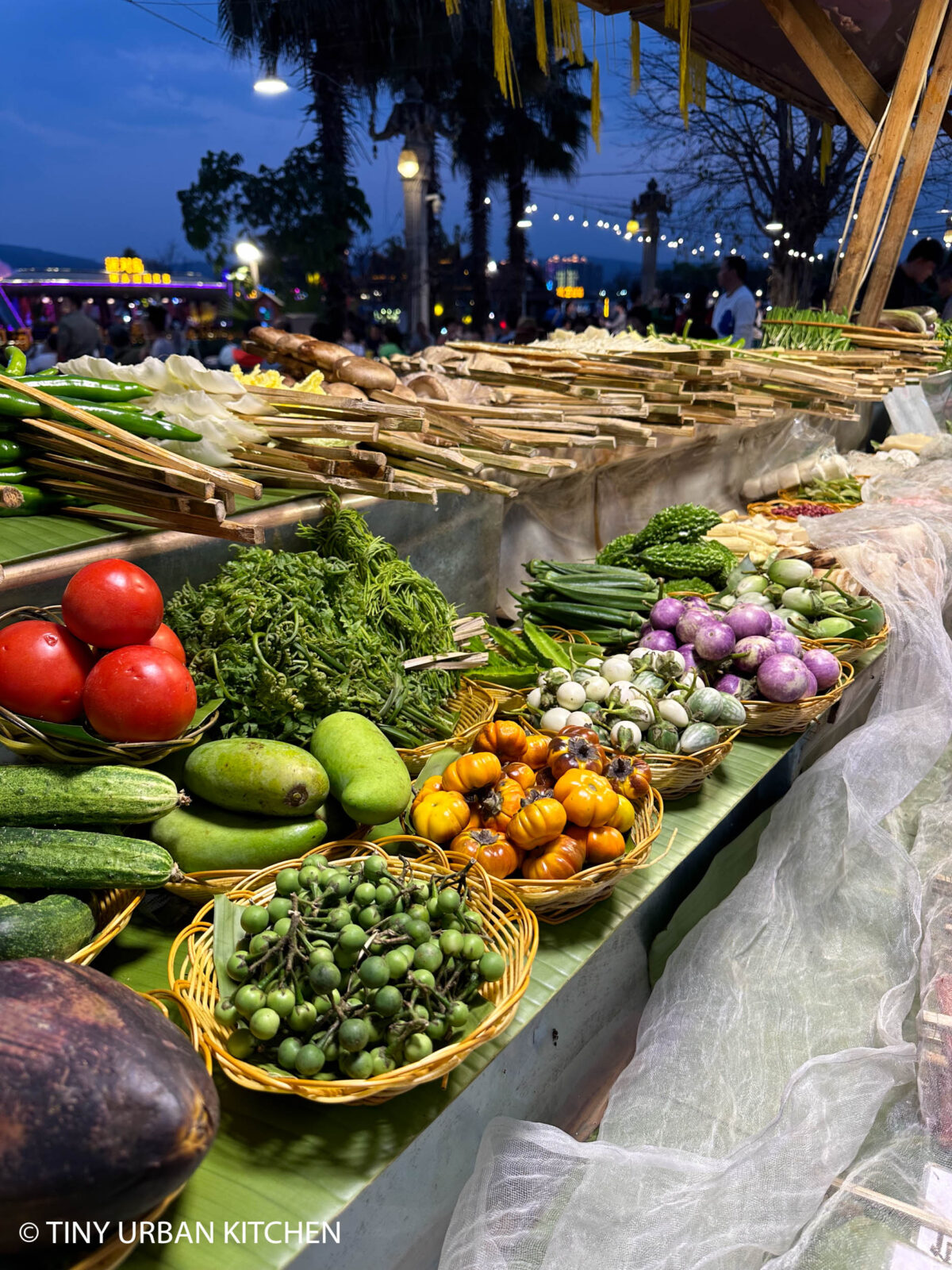
Dai BBQ Restaurants are popular throughout the region. We enjoyed one right inside Gaozhuang Night Market. Choose your ingredients and they grill it for you. Head over to the Gaozhuang Night Market post to read more about it.
Traditional Dai Dinner Feast
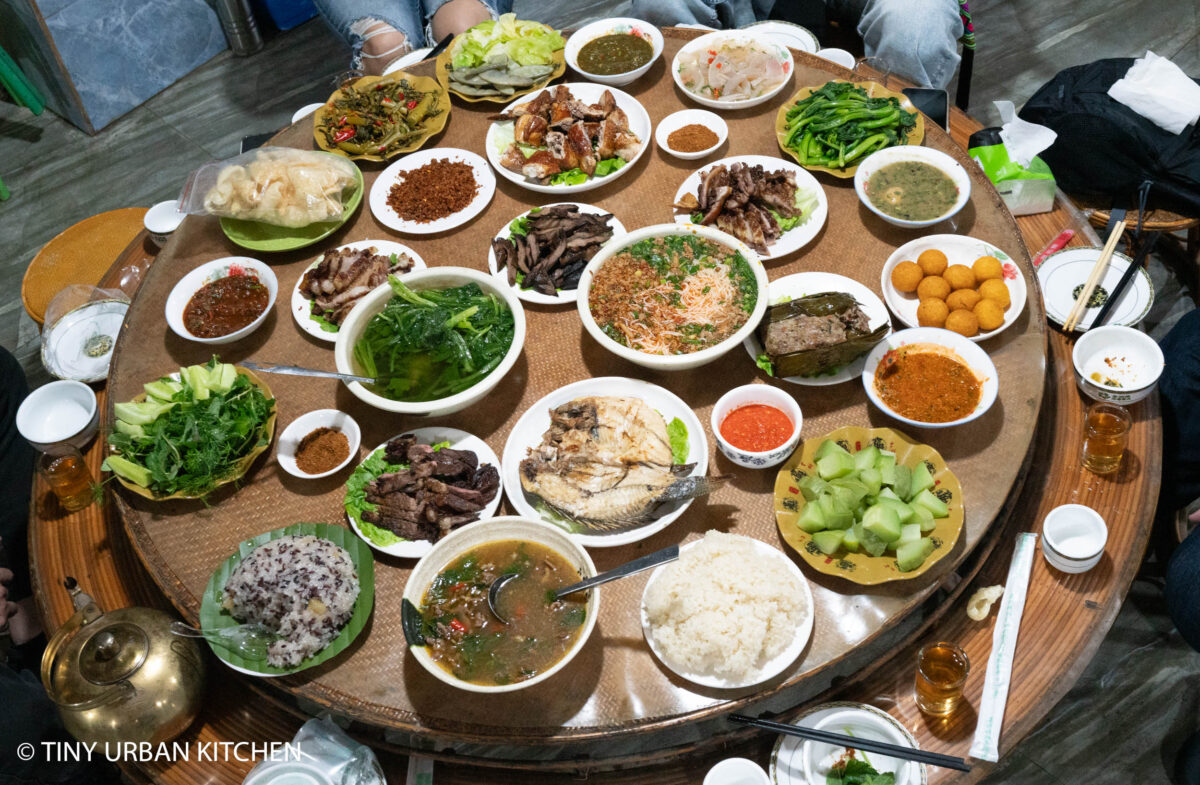
We had a lot of classic Dai dishes. You can read a more detailed post about Dai cuisine at this post. This meal included a lot of classics, such as raw veggies and pork rinds dipped in tomato nanmi (their "salsa"), sticky rice, grilled fish, rice noodles, and lots of other meats and veggies.
This whole massive feast (which probably serves 8-10 people), only cost around 500RMB, or less than US$70. There was only 5 of us, so we had A LOT of leftovers. We gave them all to our tour guide, who was really, really happy to take them home for his family.
Dai food is really flavorful, a wonderful blend of the bountiful produce in the area and the rich flavor influences from all the surrounding Southeast Asian countries. It's really worth trying!
Dai Clothing
Dai dresses are really colorful and have many different intricate patterns. If you want to buy some dresses, the prices aren't too bad, and they will tailor it for you on the spot.
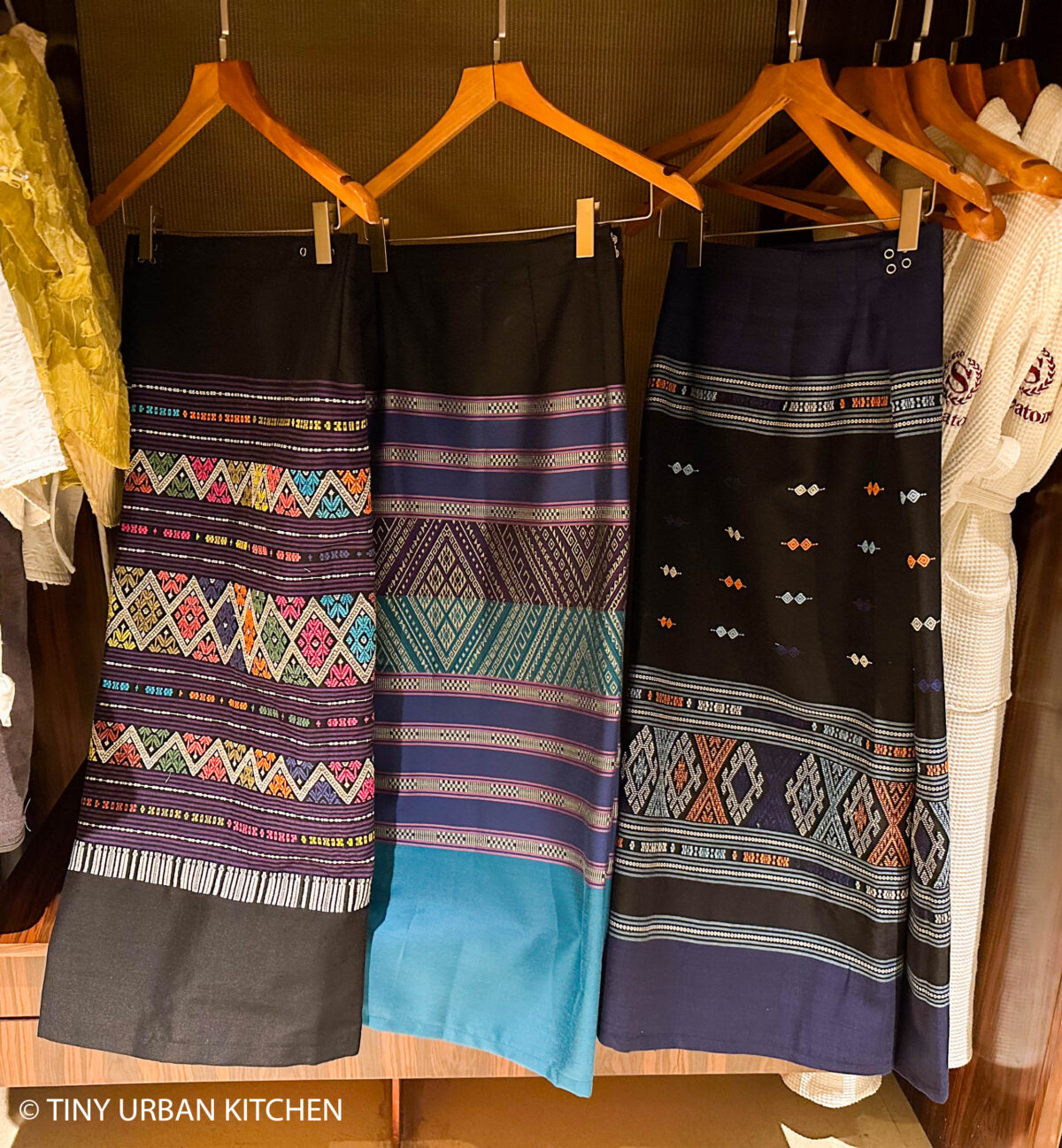
Our local friend who was traveling with us loves pretty dresses, and thus we went around multiple shops to look at Dai dresses. We found a good one right across the street from the Manting Imperial Garden (one of the most popular tourist sites in Xishuangbanna).
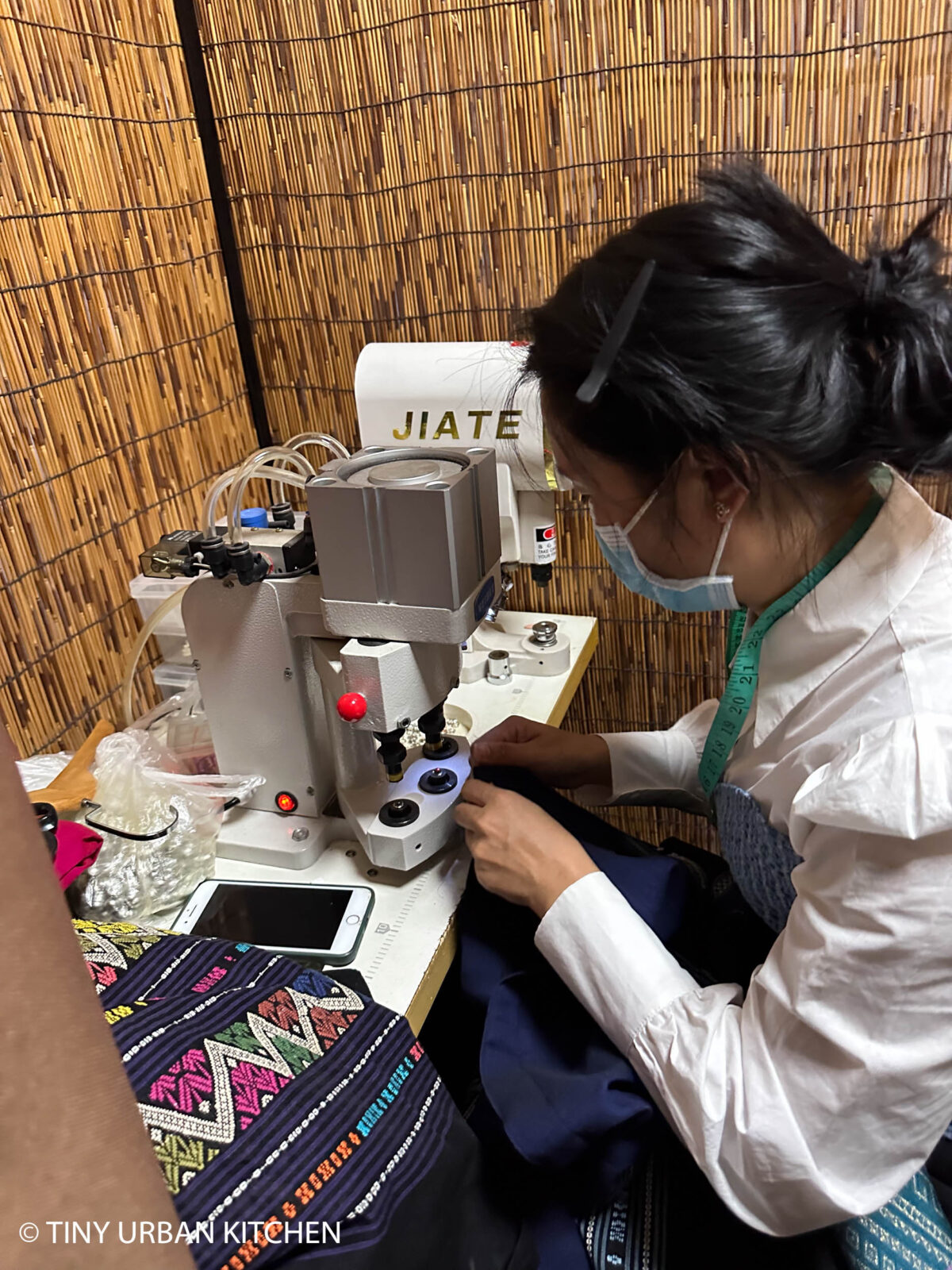
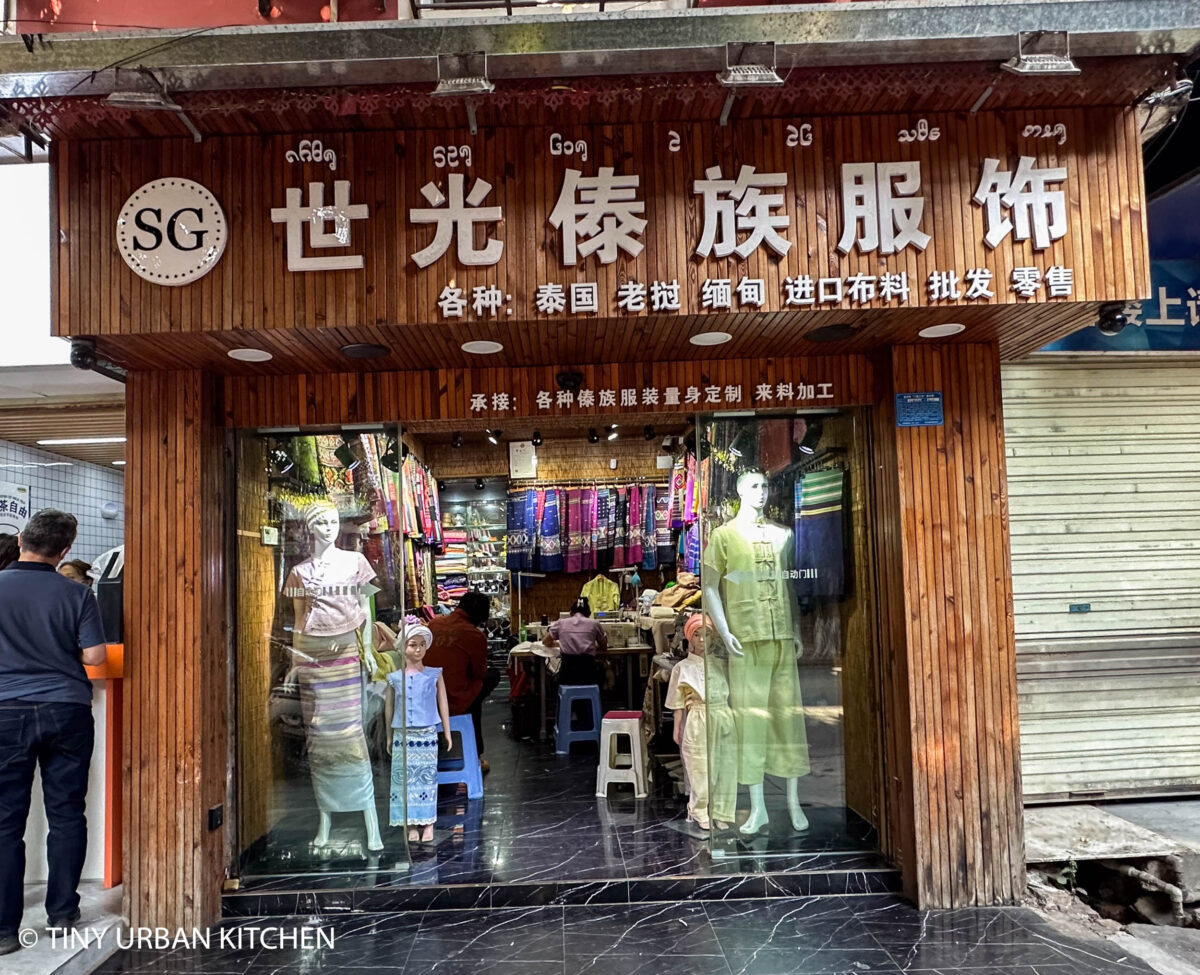
This place (世光傣族服) sells higher quality Dai style dresses. You select your fabric and they will tailor it for you on the spot. Most dresses cost between RMB150 - RMB350 including tailoring (about $20 - $50), which is really not bad considering the quality.
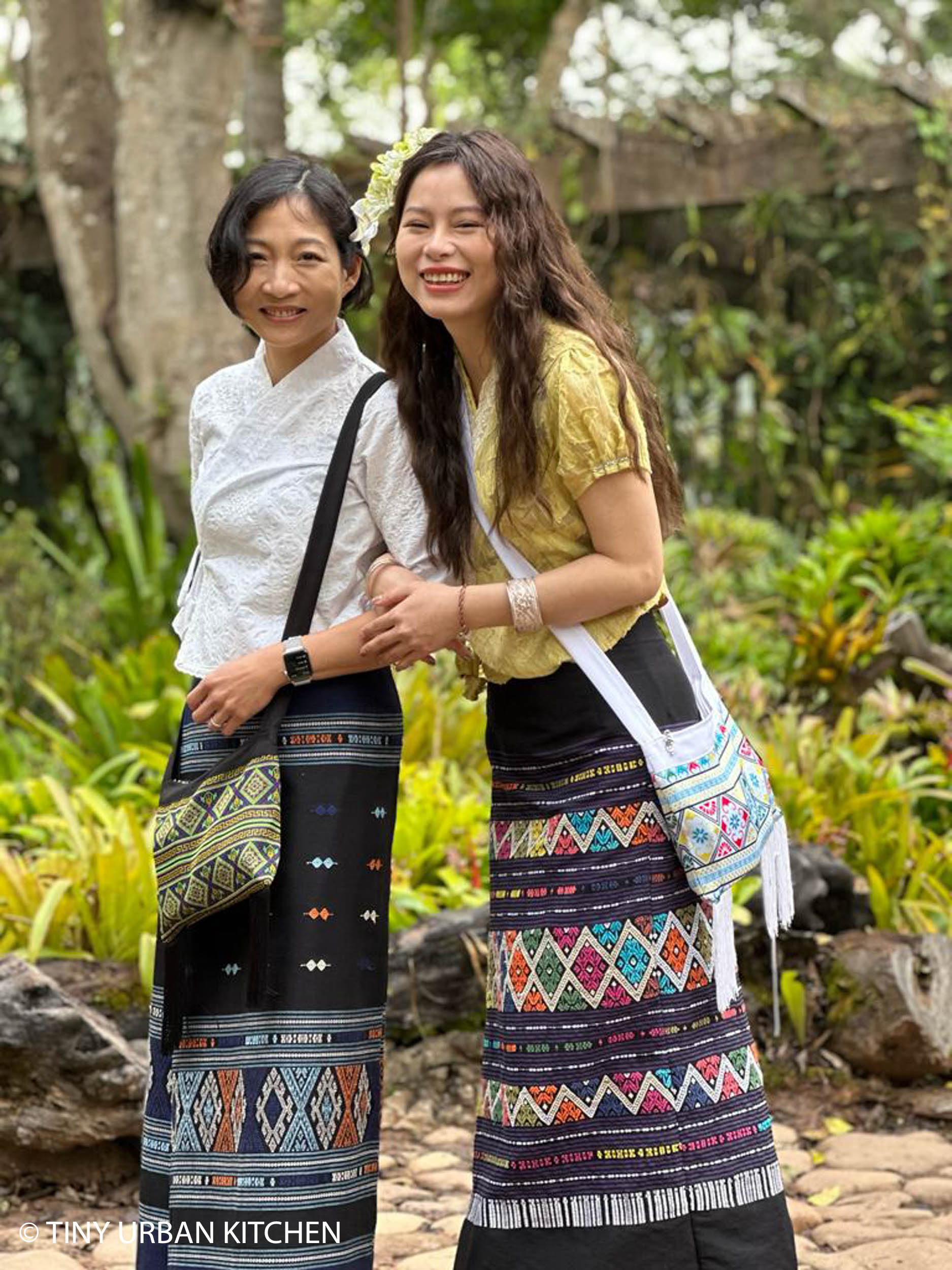
It was fun to dress up and visit some of local sites (and take photos!). I will say, these Dai dresses are not that easy to walk in! I guess I am a fast walked, and I usually take wider strides!
Next up, a Hani Food & Culture (another ethnic minority group)








